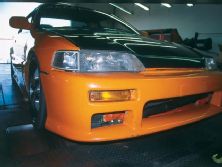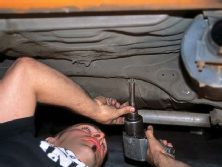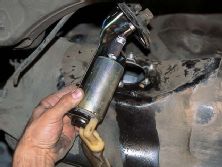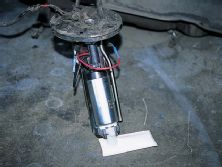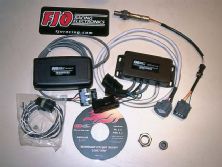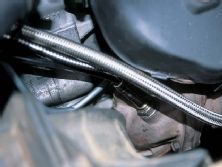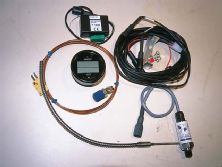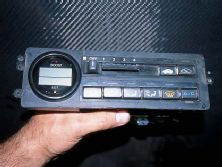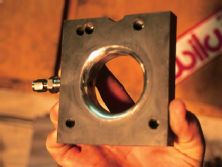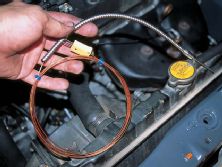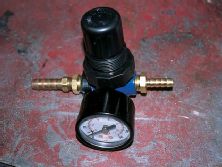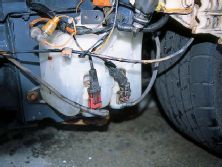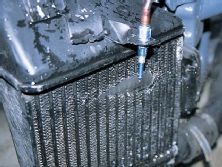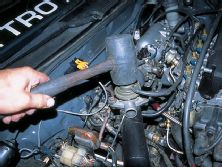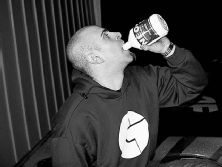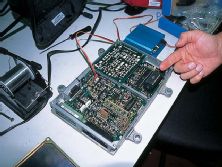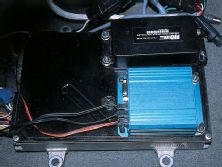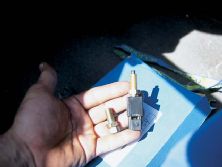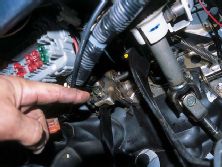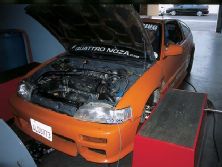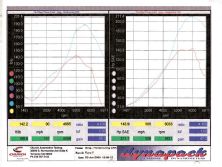One of the most misunderstood and feared aspects of racing with aftermarket parts is tuning. Without proper tuning, even the most carefully built motor will go postal. For some people, tuning means magnetizing their car and driving through Pep Boys for the latest bolt-on junk. But at its core, engine tuning really just means controlling fuel and spark to optimize power, improve driveability and, in general, prevent the internal components from fusing.
The air/fuel ratio in a normally aspirated street car comes in around 13.5 to 14.7:1. For every 14.7 parts of air, there is one part fuel. On a turbocharged car, a richer ratio of 11.5 to 13:1 is ideal. Simply put, when more air is forced into the engine via turbo or supercharger, the engine needs more fuel.
There are a number of ways to do this. Using a boost-dependent fuel pressure regulator is the cheapest and most archaic method. This unit provides 8 to 12 psi of fuel for each pound of boost. This produces a safe environment with plenty of fuel, although the engine often ends up with more fuel than it needs, resulting in less power and poor gas mileage.
Another option is the electronic fuel controller. These units tap into the map sensor, O2 sensor, and throttle position switch and instruct the factory ECU to provide more or less fuel in relation to rpm. While these units help round out rough areas under full throttle, they don't address the midthrottle range. As a result, driveability suffers.
The best and most efficient fuel management unit allows you to change the fuel depending on load and boost conditions. This type is good for fuel economy, driveability and adequate fueling under changing boost conditions.
When choosing one, it's important to plan for your needs. A more expensive system doesn't necessarily mean it's better. On the other hand, you could outgrow a cheaper system and end up spending more money than you had planned. It's best to look for a unit with features you already understand to some degree, as well as one that holds some secrets you can unlock as your tuning knowledge grows.
Tuning the Spark and Monitoring Performance The second big component of tuning involves tweaking the spark. Honda designs its stock timing maps for an N/A setup, which means tons of advance throughout the map. A turbocharged engine enjoys a lot less timing but this factor changes depending on the amount of boost present. Some companies even offer ignition boxes that retard the timing depending on boost. But your best bet is to pick a system that incorporates everything into one, like the Hondata system we're using on the CRX.
A final key element of tuning is the ability to monitor everything going on with your engine. Proper tuning can't be done without the right instruments. One of the most important tools in a tuner's arsenal is a wideband O2 sensor and air/fuel ratio display.
This allows you to see in real time the actual air/fuel ratio of the motor from 10.0 to 20:1 (I'm not talking about the overpriced light shows that mount to your dash and only read from 14.0 to 15.3:1 -- they bear responsibility for tons of blown-up motors around the world). The ability to monitor boost and exhaust gas temperature also ranks high on the important list, especially if you can record peaks (like the SPA Technique dual gauge we're using). It's very hard to watch all gauges at once, then recall what they were reading after the run.
Data logging is very important and can save you a ton of tuning time. With data logging, your acceleration run is recorded and can be played back in real time in graph form. Data logging records rpm, air temp, water temp, speed, air/fuel ratio, boost pressure, exhaust gas temp, timing, and more, then overlays the different parameters in a graph so you can pinpoint any trouble spots. In our previous installment, we left off with a freshly built turbo motor bolted in place and ready to be fired up. In this issue, we'll finish upgrading the fuel system and install the electronics.
With high-volume fuel flow and direct replacement a goal, we first replaced the stock fuel pump with a Walbro 255 liter/hour unit, paired off with the 450cc injectors.
Next we installed a boost/exhaust temp dual gauge from SPA Technique. It's essentially two gauges for the price of one, and features external warning outputs and push button peak memory. We also added the FJO Wide Band O2 Sensor Controller and display to monitor the air/fuel ratio. It's one the most affordable systems on the market and we sourced ours from Cyberspace Automotive Performance.
The FJO comes complete with data logging capabilities, wide band O2 sensor, rpm input, and auxiliary input. Finally, we trekked to Home Depot in search of a boost controller, aka a dial-a-bomb. Campbell-Housefield makes a small pressure regulator for an air compressor that will cure your power greed needs.
Shopping List Walbro Fuel Pump$139 Spa Technique BoosT/ Exhaust Gas Temp Gauge$409 FJO Wide Band O2 Sensor Controller/Display$652 Home Depot, Campbell-Housefield Pressure Regulator$24 Hondata S200 W-3 Bar map and 3-step Rev Limiter$620 Grand Total$1,844Readers, any ideas? You want to see more of the Budget Boost Rex? Hit us with some thoughts. In the meantime, keep an eye on your rearview mirror.
The little T25 that could turned out to be the T2 small that couldn't. Even though 211 hp is enough to propel this CRX into the 11s in the quarter-mile and give chase to a Corvette Z06 (true story behind this claim), it still doesn't seem like enough.
Is there more potential in this single-cam plant? Do we need to change out the turbo to take this D-series motor to its limit?
As we've said before, enough is never enough. And even though the CRX isn't making the 250-260 hp we'd hoped for, we're still very proud of our 211-hp baby. She's got plenty of spark and perhaps there's more left.

